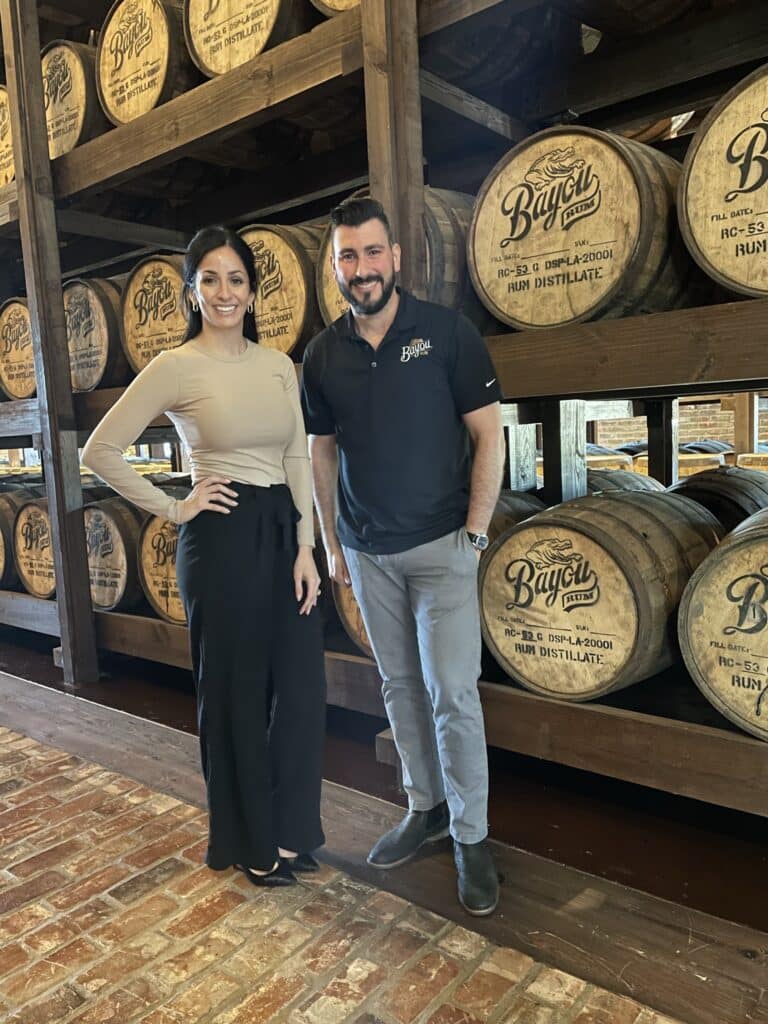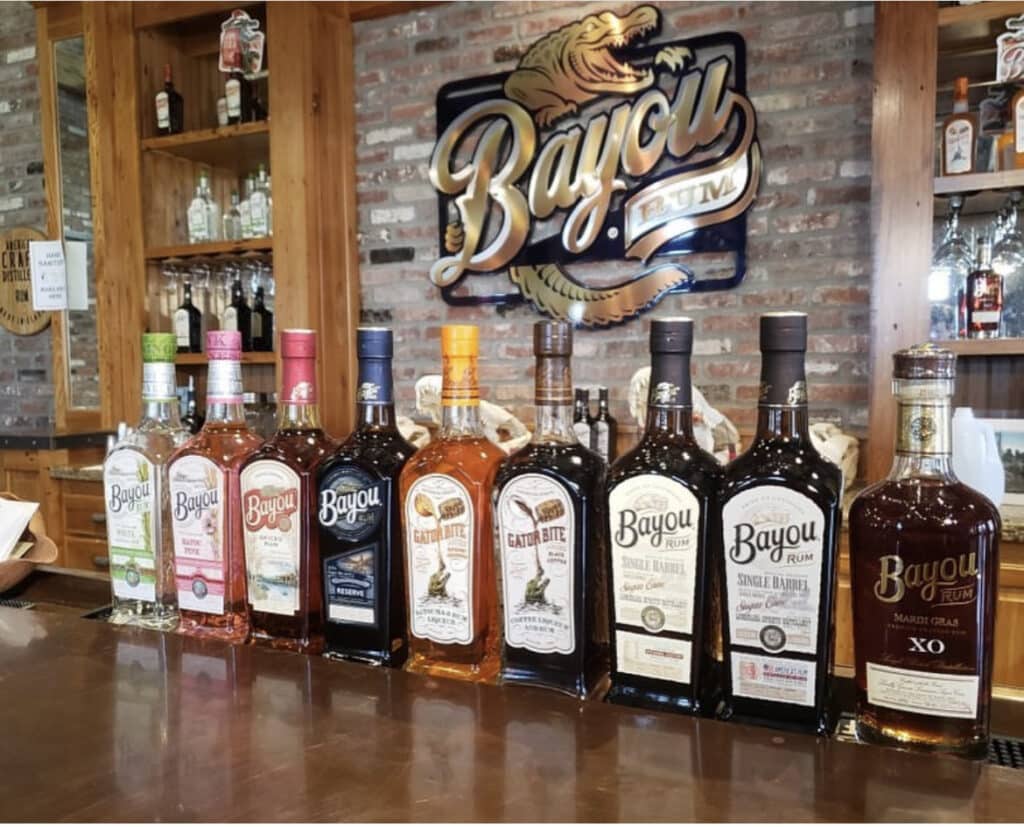
“So what is it that makes rum, rum, exactly?” Vicente is kind enough to pretend like my question isn’t a dumb one. “Good question,” he says. “It’s the source. All rum comes from sugarcane.”
Louisiana produces more sugarcane than all of the Caribbean islands combined and is the fifth largest sugarcane producer in the world. Vicente, at 36 years old, has 20 years of rum experience. You might think that’s a typo, but he was only 15 when he started learning from his master distiller father.
Vicente grew up surrounded by sugar cane and sugar mills and often spent time “playing in the lab, blending alcohol with water. It was a hobby when I was a kid, but it grew into a career and passion.”
Vicente received a degree in chemical engineering and worked for two different rum companies in the Dominican Republic. When he was 25, he moved to Miami. “I didn’t know English at all. I had a friend who helped me translate everything.” That’s when he landed an interview with Bayou Rum founders Trey Litel, Tim Litel and Skip Cortese.
“When I got here the facility was so beautiful. I was blown away. I’ve been in many facilities, and there are no other companies like Bayou Rum. We’re unique in both the beauty of our facility and in our dedication to educating the public. After people see what we do here they appreciate boutique, premium rum and hold it separate from the big mass-produced rum brands.” Rum was America’s first spirit. In order to win the Virginia House of Burgesses in 1758, George Washington attracted (and maybe bribed) voters with rum.
The Tour
When you arrive for your tour, you’ll enter through the gift shop and watch a four-minute video (where you’ll see Vicente). Then you’ll see where the rum is actually crafted. Bayou Rum sources all of their raw sugar and molasses from MA Patout & Son in New Iberia. They’re the oldest mill in the country and have been around since 1829.

It’s a slow fermentation, but this is part of what produces all the flavors Vicente is looking for. Then the alcohol is extracted from the product and run through a double distillation process after which comes blending. (What’s left after the alcohol is extracted is called vinasse, a liquid rich in nutrients and used as fertilizer.)
Vicente is tasting the rum off and on throughout this process. A sample of the product is sent to the in-house lab, where they measure alcohol concentration and, “study the DNA of the rum.” This entire process takes a week. Bayou Rum repeats this process five times per week. One batch produces 6,000 bottles.
At this point, aged rums are transferred into barrels previously used for bourbon, whiskey or, when crafting a special edition, wine. They age in the barrels for at least four years.
“You can have the exact same process in a different place, but because of the raw materials and weather conditions you’ll have a different flavor profile,” Vicente says.
So many variables can be tweaked to change the rum: the type of wood (Bayou Rum mostly uses American White Oak); the size of the barrel; what type of alcohol was in the barrel; open vs. closed fermentation; temperature settings; and what happens at the blending stage.
I’m sure it’ll come as no surprise that the rum tasting was my favorite part of the tour. The clear winner for me was the XO Mardi Gras, a rum matured in bourbon barrels for up to five years and finished for one extra year in Pedro Ximenez sherry barrels.
Bayou Rum opened its doors in 2013, which means they now have barrels that have been aging for 10 years.
“There aren’t many of them, but, man, I’m ready to taste them. I’m saving those for something special and unique. It’ll be, maybe, 100 bottles, no more than that. I’m looking forward to that, for sure.”

Have an idea for Diana’s next expe-rience? Let her know by emailing her at diana.vallette@gmail.com














Comments are closed.